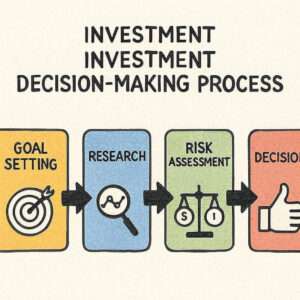Mastering Risk and Return: Smart Investment Strategies

Understanding Risk and Return Description Learn how to balance potential rewards with acceptable risk levels when choosing investments
# Understanding Risk and Return: Learn How to Balance Potential Rewards with Acceptable Risk Levels When Choosing Investments
Investing can be an exciting journey filled with the potential for growth and wealth accumulation. However, it also comes with its own set of challenges, primarily revolving around the concepts of risk and return. Understanding these concepts is crucial for making informed investment decisions. In this article, we’ll explore what risk and return mean, how they relate to each other, and how you can balance them to achieve your investment goals.
Risk, in the context of investing, refers to the possibility of losing some or all of your original investment. It is the uncertainty associated with the returns you expect to earn. Different investments come with varying levels of risk, and it’s important to understand these risks before committing your money.
Types of Investment Risks
- Market Risk: This is the risk of losses due to changes in the market prices. Factors such as economic recessions, political turmoil, or changes in interest rates can affect the entire market.
- Credit Risk: This occurs when a borrower fails to repay a loan or meet contractual obligations. It primarily affects bonds and other fixed-income investments.
- Liquidity Risk: This is the risk of not being able to sell your investment quickly enough to prevent a loss. Investments like real estate or certain stocks with low trading volumes can be difficult to sell.
- Inflation Risk: The risk that inflation will erode the purchasing power of your money, particularly if your investments do not yield returns above the inflation rate.
- Interest Rate Risk: Changes in interest rates can affect the value of investments, particularly bonds. When rates rise, bond prices generally fall, and vice versa.
 What is Return in Investing?
What is Return in Investing?
Return is the gain or loss generated by an investment over a particular period. It is usually expressed as a percentage of the initial investment. Returns can come in the form of interest, dividends, or appreciation in the value of the investment.
Calculating Return
Understanding how to calculate return is essential. Here’s a simple formula to determine your investment return:
[ \text{Return} = \left( \frac{\text{Current Value} – \text{Initial Investment}}{\text{Initial Investment}} \right) \times 100 ]
For example, if you invested $1,000 in a stock that is now worth $1,100, your return would be:
[ \left( \frac{1100 – 1000}{1000} \right) \times 100 = 10% ]
The Relationship Between Risk and Return
Generally, the relationship between risk and return is direct; the higher the potential return, the higher the risk involved. Investors are often required to decide how much risk they are willing to take on to achieve their desired level of return.
Risk-Return Tradeoff
The risk-return tradeoff is a fundamental concept in investing. It suggests that to achieve higher returns, you must be willing to accept more risk. However, this doesn’t mean you should always choose the highest-risk option. Instead, your goal should be to find a balance where the potential returns justify the risks taken.
How to Balance Risk and Return
Balancing risk and return involves careful planning and assessment of your financial goals, risk tolerance, and investment horizon.
Assessing Risk Tolerance
Your risk tolerance is your ability and willingness to endure declines in the value of your investments. It is influenced by factors such as your investment experience, financial situation, and emotional response to market fluctuations.
- Conservative Investors: Prefer to minimize risk and are willing to accept lower returns for more stability. They typically invest in bonds or other low-risk securities.
- Moderate Investors: Willing to take on moderate risk for potentially higher returns. They often have a mix of stocks and bonds in their portfolios.
- Aggressive Investors: Comfortable with high levels of risk for the chance of substantial returns. They tend to invest heavily in stocks or other high-risk assets.
Diversification
Diversification is a strategy used to reduce risk by spreading investments across different asset classes and sectors. By diversifying, you minimize the impact of a poor-performing investment on your overall portfolio.
Asset Allocation
Asset allocation involves dividing your investment portfolio among different asset categories, such as stocks, bonds, and cash. The allocation should align with your risk tolerance, financial goals, and investment timeline.
Regular Portfolio Review
Regularly reviewing your portfolio helps ensure that it aligns with your investment goals and risk tolerance. Market conditions and personal circumstances can change, so it’s important to adjust your portfolio accordingly.

Conclusion: Making Informed Investment Decisions
Understanding the balance between risk and return is essential to making informed investment decisions. By assessing your risk tolerance, diversifying your portfolio, and regularly reviewing your investments, you can navigate the complexities of the investment landscape with confidence. Remember, the goal is to achieve a return that meets your financial objectives while maintaining a level of risk you are comfortable with.
Investing is not without challenges, but with the right knowledge and strategies, you can work towards achieving your financial goals. Whether you’re a conservative, moderate, or aggressive investor, balancing risk and return is key to long-term investment success.




